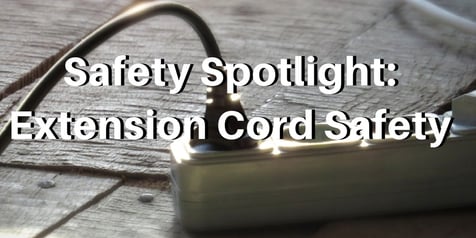EXTENSION CORD SAFETY

The basics
Extension cords make work tasks easier and more convenient. However, they can also pose serious burn, shock and tripping hazards if you do not use them properly.
Prior to use, read the label describing the usage, size and wattage ratings. The gauge rating on the extension cord is indicated by a number corresponding to electrical items that you can plug into the cord. The rule of thumb is, the smaller the gauge number, the larger the power wattage of the electrical item.
To prevent unnecessary extension cord-related injuries on the job, follow these safety tips:
- Use cords with the UL marking, which indicate that the cord has been tested for safety hazards.
- Unplug cords when they are not in use since they still conduct electricity in the outlet, even if they are not connected to an appliance or tool.
- Never use cords that are damaged or cut. Notify your supervisor of these defects right away to avoid injuries.
- Never run an extension cord if it creates a tripping hazard.
FIRE PREVENTION
It starts with you
The leading causes of workplace fires are electrical failures, the misuse of electrical equipment, friction, open flames and smoking. That’s why we’re counting on you to reduce the risk of fire by practicing the following fire prevention tips:
- Comply with ‘No Smoking’ signs and dispose of cigarettes and matches in designated areas. Extinguish smoking materials before you dispose of them.
- Watch for frayed electrical cords or overloaded circuits.
- Dispose of flammable wastes and scraps by placing them in metal containers.
- Store combustibles in a safe area away from furnaces, electrical equipment and cigarettes.
- Do not burn wastepaper containing explosive materials such as aerosol or paint.
- Inspect electrical equipment and tools prior to use.
- Keep mechanical equipment properly lubricated.
Be accountable…immediately notify a supervisor if you notice a potential fire hazard.
